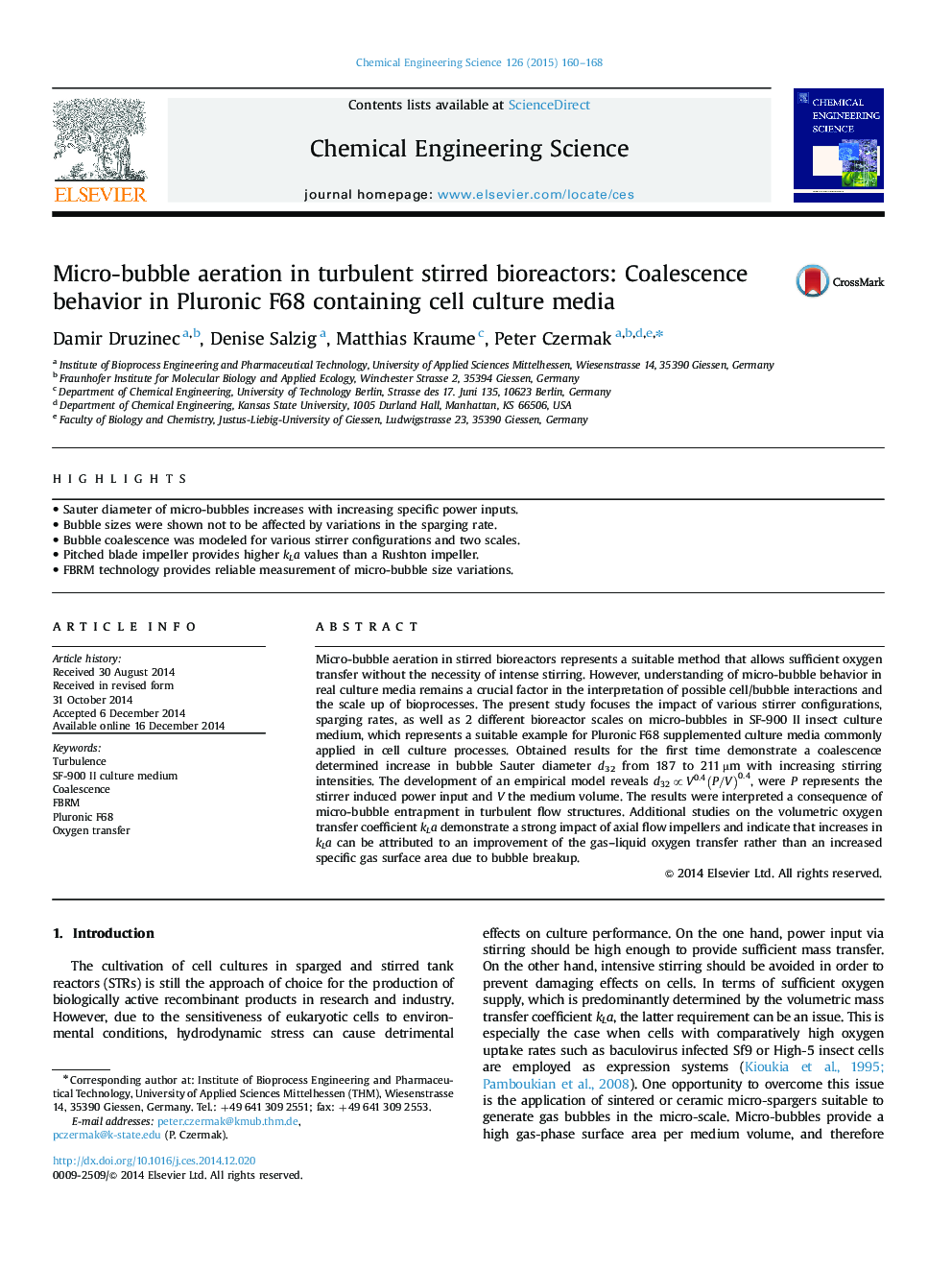| Article ID | Journal | Published Year | Pages | File Type |
|---|---|---|---|---|
| 6590232 | Chemical Engineering Science | 2015 | 9 Pages |
Abstract
Micro-bubble aeration in stirred bioreactors represents a suitable method that allows sufficient oxygen transfer without the necessity of intense stirring. However, understanding of micro-bubble behavior in real culture media remains a crucial factor in the interpretation of possible cell/bubble interactions and the scale up of bioprocesses. The present study focuses the impact of various stirrer configurations, sparging rates, as well as 2 different bioreactor scales on micro-bubbles in SF-900 II insect culture medium, which represents a suitable example for Pluronic F68 supplemented culture media commonly applied in cell culture processes. Obtained results for the first time demonstrate a coalescence determined increase in bubble Sauter diameter d32 from 187 to 211 µm with increasing stirring intensities. The development of an empirical model reveals d32âV0.4(P/V)0.4, were P represents the stirrer induced power input and V the medium volume. The results were interpreted a consequence of micro-bubble entrapment in turbulent flow structures. Additional studies on the volumetric oxygen transfer coefficient kLa demonstrate a strong impact of axial flow impellers and indicate that increases in kLa can be attributed to an improvement of the gas-liquid oxygen transfer rather than an increased specific gas surface area due to bubble breakup.
Related Topics
Physical Sciences and Engineering
Chemical Engineering
Chemical Engineering (General)
Authors
Damir Druzinec, Denise Salzig, Matthias Kraume, Peter Czermak,
